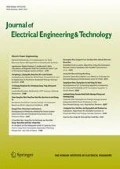Abstract
Due to the high power density characteristics of permanent magnet (PM) traction motors and the strict loading conditions of electric vehicle (EV) engine compartments, the excessive losses inside the motors can elevate rapidly the temperature rises, deteriorate the magnetic property of PMs, limit the output torques, and even cause the overheating damages of the machines. In order to guarantee the operational reliability, it’s of vital importance to research and develop the effective, reliable and economical cooling systems for improving the working performances of the PM traction motors. In this paper, the three-dimensional (3D) fluidic-thermal coupled model of a high power density interior PM traction motor is established based on the basic theory of computational fluid dynamics (CFD) and numerical heat transfer. The fluid flow and thermal distributions are analyzed based on finite volume method (FVM), and verified by experimental results. According to the heating characteristics of the motor, the external water frame structure of the motor shell is modified to improve the cooling efficiency. Taguchi method is used to optimize the cooling structural parameters, so as to reduce the steady-state temperature rise of the motor. The research work in this paper has certain reference significance for the design and development of high power density PM traction motors used in EV applications.








Similar content being viewed by others
References
Zhu ZQ, Howe D (2007) Electrical machines and drives for electric, hybrid, and fuel cell vehicles. Proc IEEE 95(4):746–765
Zhu GJ, Zhu YH, Zhu JG et al (2017) Thermal analysis and cooling system design of a permanent magnet traction motor using computational fluid dynamics and cell method. Trans China Electr Soc 32(5):70–77
Chau KT, Chan CC, Liu CH (2008) Overview of permanent-magnet brushless drives for electric and hybrid electric vehicles. IEEE Trans Ind Electron 55(6):2246–2257
Zhu GJ, Liu XM, Li LN et al (2019) Cooling system design of a high-speed PMSM based on a coupled fluidic-thermal model. IEEE Trans Appl Supercond 29(2):0601405
Tang RY (2011) Modern permanent magnet machines—theory and design. China Machine Press, Beijing
Gleichman RC (2002) Failure modes and field testing of medium-voltage motor windings. IEEE Trans Ind Appl 38(5):1473–1476
Gai YH, Kimiabeigi M, Chong YC et al (2019) Cooling of automotive traction motors: schemes, examples, and computation methods. IEEE Trans Ind Electron 66(3):1681–1692
Zheng P, Liu RR, Thelin P et al (2008) Research on the cooling system of a 4QT prototype machine used for HEV. IEEE Trans Energy Convers 23(1):61–67
Cheng SK, Li CP, Chai F et al (2012) Analysis of the 3D steady temperature field of induction motors with different cooling structures in mini electric vehicles. Proc CSEE 32(30):82–90
Polikarpova M, Ponomarev P, Lindh P (2015) Hybrid cooling method of axial-flux permanent-magnet machines for vehicle applications. IEEE Trans Ind Electron 62(12):7382–7390
Semidey SA, Mayor JR (2014) Experimentation of an electric machine technology demonstrator incorporating direct winding heat exchangers. IEEE Trans Energy Convers 61(10):5771–5778
Lindh PM, Petrov I, Semken RS et al (2016) Direct liquid cooling in low-power electrical machines: proof-of-concept. IEEE Trans Energy Convers 31(4):1257–1266
Lindh PM, Petrov I, Varri AJ et al (2017) Direct liquid cooling method verified with an axial-flux permanent-magnet traction machine prototype. IEEE Trans Ind Electron 64(8):6086–6095
Zhu GJ, Liu XM, Li LN et al (2019) Coupled electromagnetic-thermal-fluidic analysis of permanent magnet synchronous machines with a modified model. CES Trans Electr Mach Syst 3(2):204–209
Huang XZ, Tan Q, Li LY et al (2017) Winding temperature field model considering void ratio and temperature rise of a permanent-magnet synchronous motor with high current density. IEEE Trans Ind Electron 64(3):2168–2177
Zhu GJ, Zhu YH, Tong WM et al (2018) Double-circulatory thermal analyses of a water-cooled permanent magnet motor based on a modified model. IEEE Trans Magn 54(3):Article ID 8101504
Harris TA, Kotzalas MN (2004) Essential concepts of bearing technology, 5th edn. Taylor & Francis Group, BocaRaton, pp 184–186
Teek SL, Chen SX, Gao XK (2001) Robust torque optimization for BLDC spindle motors. IEEE Trans Ind Electron 48(3):656–663
Omekanda AM (2006) Robust torque and torqueper-inertia optimization of a switch reluctance motor using the Taguchi methods. IEEE Trans Ind Appl 42(2):473–478
Author information
Authors and Affiliations
Corresponding author
Additional information
Publisher's Note
Springer Nature remains neutral with regard to jurisdictional claims in published maps and institutional affiliations.
Rights and permissions
About this article
Cite this article
Zhu, G., Jia, N., Li, L. et al. Cooling System Design Optimization of a High Power Density PM Traction Motor for Electric Vehicle Applications. J. Electr. Eng. Technol. 16, 3061–3068 (2021). https://doi.org/10.1007/s42835-021-00843-0
Received:
Revised:
Accepted:
Published:
Issue Date:
DOI: https://doi.org/10.1007/s42835-021-00843-0




